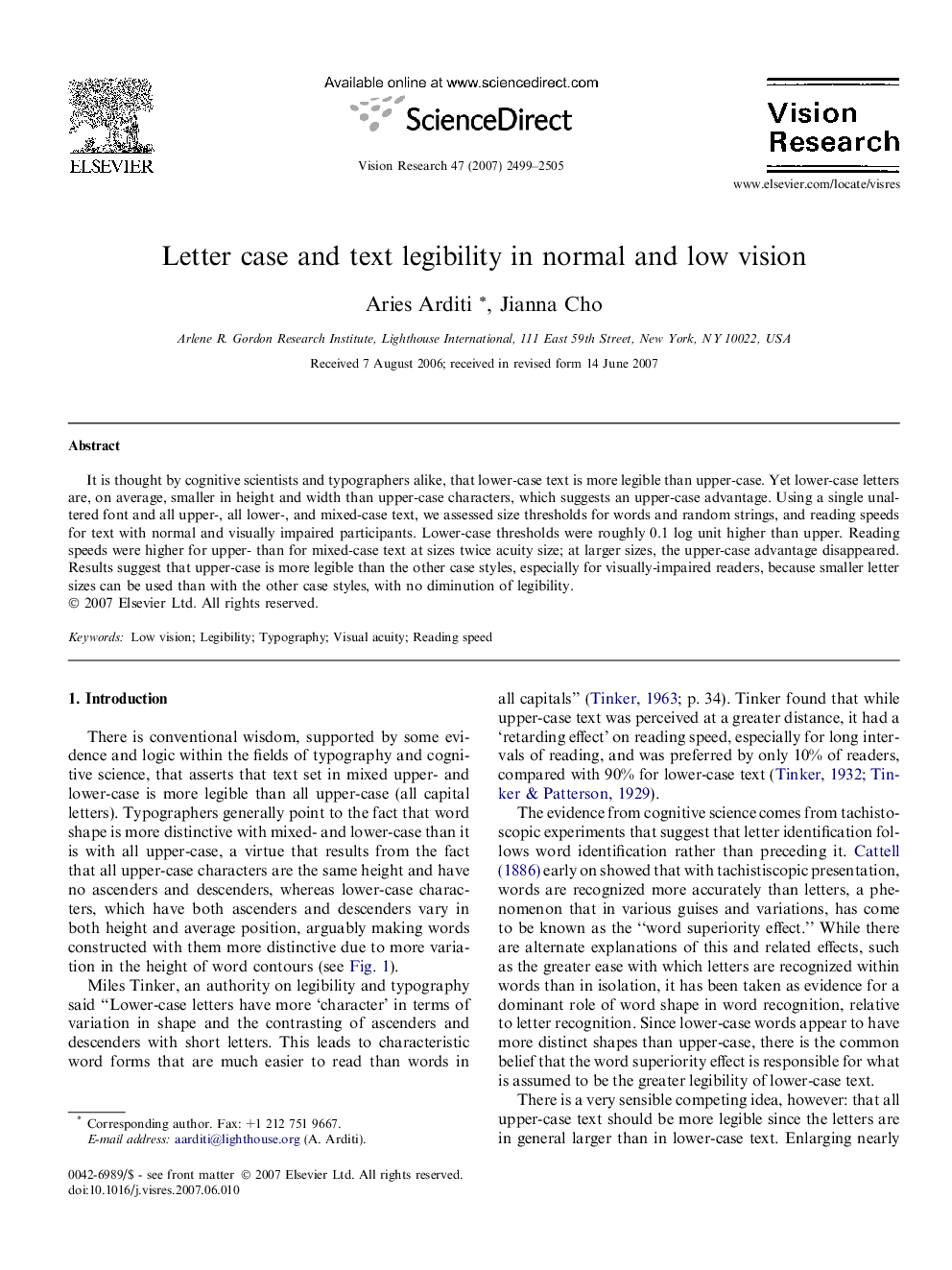| Article ID | Journal | Published Year | Pages | File Type |
|---|---|---|---|---|
| 4035130 | Vision Research | 2007 | 7 Pages |
It is thought by cognitive scientists and typographers alike, that lower-case text is more legible than upper-case. Yet lower-case letters are, on average, smaller in height and width than upper-case characters, which suggests an upper-case advantage. Using a single unaltered font and all upper-, all lower-, and mixed-case text, we assessed size thresholds for words and random strings, and reading speeds for text with normal and visually impaired participants. Lower-case thresholds were roughly 0.1 log unit higher than upper. Reading speeds were higher for upper- than for mixed-case text at sizes twice acuity size; at larger sizes, the upper-case advantage disappeared. Results suggest that upper-case is more legible than the other case styles, especially for visually-impaired readers, because smaller letter sizes can be used than with the other case styles, with no diminution of legibility.
